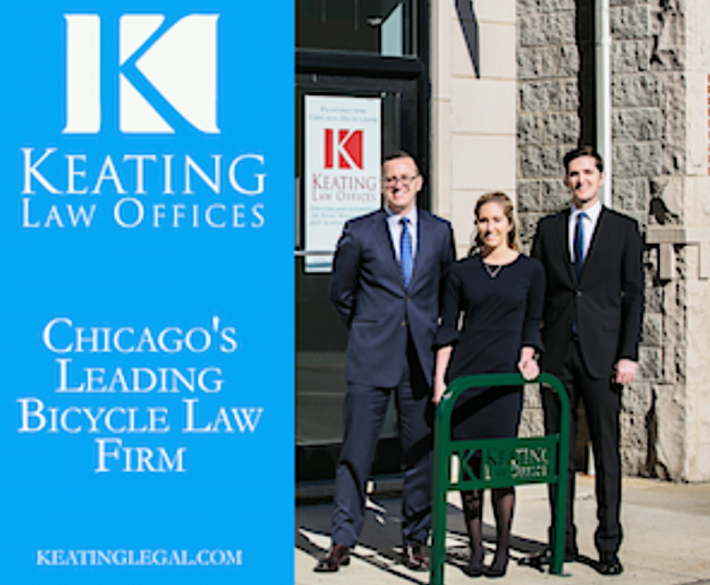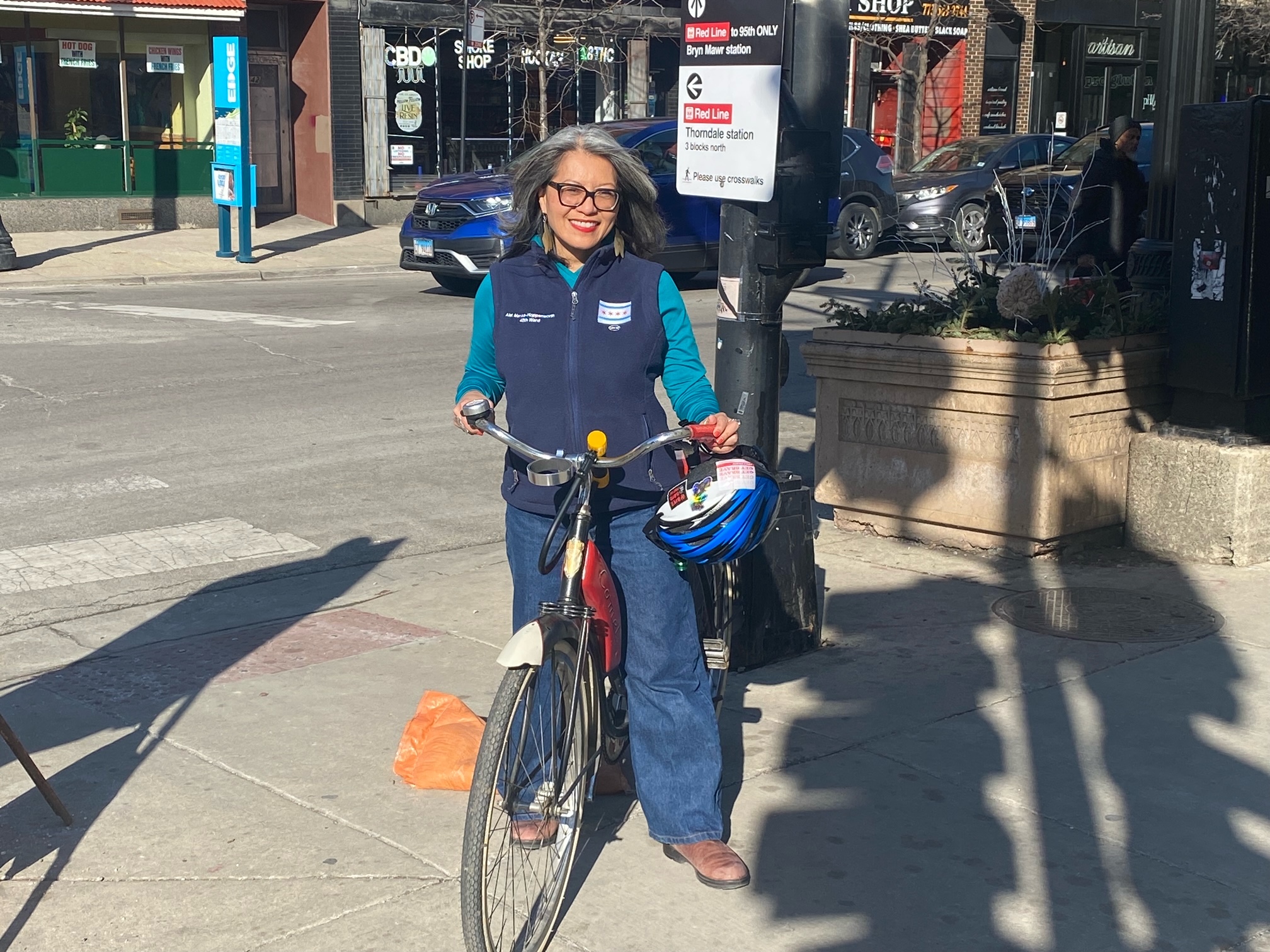
Leni Manaa-Hoppenworth is a business owner, a freelance photographer, and the alderwoman of Chicago’s 48th ward. She also says she is an enthusiastic bike rider who can be seen cycling through the streets of Edgewater on her vintage Comet. Pedestrian, public transit and bicycling issues are of great concern to Manaa-Hoppenworth, and she recently shared her thoughts.
James Porter: Have you had any progress finding the hit and run driver who fatally struck Soyfa Athamanah at Winona and Broadway last July?
Ald. Leni Manaa-Hoppenworth: Investigations are still ongoing. We’re working with Area 3 detectives so we’re asking anybody who has information to contact them.
JP: What do you think of safety improvements, including a pedestrian island and the short raised bike lane stretch, that were made at that intersection?
LM-H: We’re very pleased with so much progress that happened in terms of ensuring safety of pedestrians and bicyclists, right there on Broadway and Winona. CDOT and the 47th ward office, their efforts to help coordinate all that has been incredible. All those changes won’t bring Soyfa back, and the urgency to create those changes was really driven by a community who want to see better. I’m really grateful that those things happened, but we need to do more things proactively to prevent deaths from happening.
JP: What have you heard from constituents?
LM-H: They have mixed feelings. Some who are not bikers, they don’t understand why the color needs to be green on the street, or why the bike lanes need to be raised to the sidewalk level. All of those changes are really indications of what’s happening across the city, not just here in the 48th ward, not just at that intersection. These are measures that are evidence-based and work other places. The family of Soyfa is very grateful that something happened to prevent deaths, but people want to see an extension of that intersection. Not just there, but north on Broadway to connect all of Broadway. So bike lanes are happening in pieces; we have to look at the whole grid to connect the dots.
JP: How are things going with the reconstruction of the Red and Purple lines at stations in your wards?
LM-H: We have a front-row seat right on Bryn Mawr, so today we’re watching them install the elevator shaft. Last year at this time, they realized that the embankments that had been there for a hundred years could not stay, so they took them down. What it revealed was almost a mile and a half of land that could be developed for other things, including a park. So we had two really robust community engagement events led by Site Design, a landscape architecture firm. We were really glad to work with them so that they can present this opportunity to the community in a way that they can engage and bring the ideas forward. That’s really the most important thing.
JP: Did constituents have any particular concerns about the current station closures [Lawrence and Berwyn] and service disruptions [Bryn Mawr presently only runs south] on the Red Line?
LM-H: This project has been in the works for ten years, so conversations way back when included: "Why are you doing this to me? It’s gonna impact my daily life, it’s gonna impact my favorite small businesses, it's gonna impact how I travel to work." It’s been a very long process, including people having to manage where they park. I think that the CTA has been trying to be proactive, reaching out to small businesses within five miles, asking the businesses how the CTA can help promote them, because they understand the impact of construction and how it decreases pedestrian traffic. They’ve been trying, but with the pandemic on top of construction, its really impacted small businesses in ways that people were not prepared for. We had many businesses that closed, but what that did was open up opportunities for other small businesses. For instance, Starbucks was replaced by a Black-owned Chicago business, Sip & Savor.
JP: What do you think of the new station designs that are planned?
LM-H: We’ve seen sketches…we expect them to be close to, for instance, what we see at Wilson, but we don’t know exactly what those train stations are going to look like. Most importantly, they’re going to be new and they’re going to be ADA compliant. Accessibility is one of the most important things. It’s very frustrating when somebody with a disability comes to the station and the elevator isn’t working. Our senator, Tammy Duckworth [who uses a wheelchair] came very early on to visit the El, and the station that she went to, the elevator was out. We can’t have that! But it’s not just our senators who should have access.

JP: Are there any other issues you’d like to discuss?
LM-H: We’re, of course, very excited about the completion of the RPM (Red and Purple Modernization program), which should be done at the end of 2026. What it’s going to also do is reveal parcels of land that they have been using as staging areas that are unusually large for the CTA. We’re hoping to continue conversations on how we can work with the CTA to possibly develop affordable housing on those parcels of land. We don’t have a lot of land to develop on, here in the 48th ward. We’re also looking at an area that has high opportunity for growth because of the transit.
I want to ensure that we have the ability to talk to our agencies like the CTA and the Department of Planning & Development to really look at this parcel of land as an opportunity to bring more people into the ward, in a way that is affordable, so that we can ensure people don’t get displaced. This area is really a wonderful place, supposedly one of the coolest neighborhoods in the world (laughs) according to some magazines, because of our diversity across race, class, gender, identity and ethnicity. There are a lot of opportunities for small businesses, our proximity to the lakefront, we are rich in transit, and it’s very family-friendly. We would love to see more people living in the ward.

Did you appreciate this post? Please consider making a tax-deductible donation.




